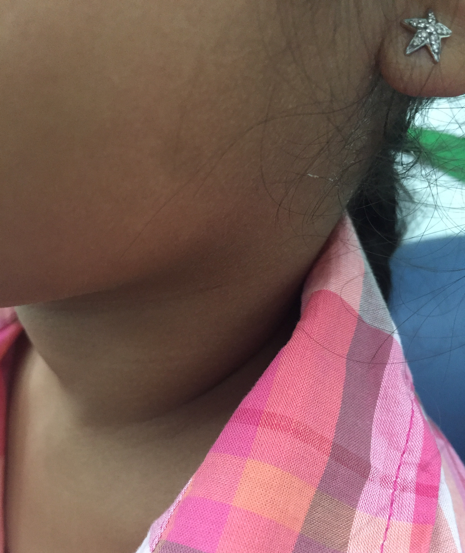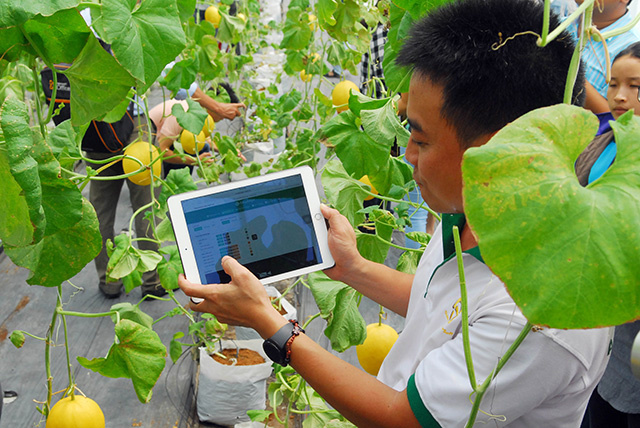 Life & Style
Life & Style

The correct diagnosis of Melioidosis is tricky as it mimics many other conditions, hence also called “the great mimicker.”

|
| Dr Mattias Larsson. Photo courtesy of Family Medical Practice |
Dr Mattias Larsson*
Thủy is a lively 12-year-old girl. She went on vacation to the countryside in central Việt Nam to help her grandmother on her farm. A few days after coming back home she developed fever, pain, headache, puffy eyelids, tenderness and swelling in the neck.
She was taken to a local clinic that diagnosed parotitis and treated her with an oral antibiotic and paracetamol. She got some temporary relief, but after some days the symptoms got worse.
The high fever persisted, and the neck pain and headache worsened. She also developed torticollis and overall muscle pain. She was unable to open her mouth and mostly lost her appetite. She also developed chest pain and cough.
The increasingly worried parents decided to take Thủy to Family Medical Practice. When examined the paediatrician noted swollen glands near the ears and enlarged lymph nodes in the neck. She was breathing rapidly, and their chest appeared to be sinking inwards. When listened to with a stethoscope, crackling sounds were heard. An ultrasound revealed inflammation in the salivary glands and an abscess in the back of the throat. Blood tests showed signs of a bacterial infection, anemia (low red blood cell count) due to Thalassemia (hereditary small red blood cells). Chest X-rays showed irregular spots and consolidation in the upper part of the lungs.
When asked about exposures, Thủy said that she had helped her grandmother in the rice fields wet soil and got some cuts on her feet and legs. The paediatrician knew that Burkholderia pseudomallei, a bacterium common in southeast Asian soil and surface water, can enter the body through small wounds, spread through the blood and cause Melioidosis (Whitmore’s disease) with abscess.
However, the correct diagnosis of Melioidosis is tricky as it mimics many other conditions, hence also called “the great mimicker.” The diagnosis was confirmed through blood and pus fluid cultures incubated for 48 hours that showed bacterial colonies with metallic shine that was positive for the “Three Antibiotic Disk Test” typical Burkholderia pseudomallei antibiotic resistance pattern.

|
| Melioidosis: The 'great mimicker' - its symptoms resemble other diseases, leading to misdiagnosis and confusion among healthcare professionals. Photo courtesy of Dr. Mattias Larsson |
Thủy was treated with an intensive treatment for two weeks including intravenous antibiotics. Her condition improved and she had no more fever. However, to eradicate the infection she had to use an oral antibiotic for another four months.
Melioidosis spreads through direct contact of contaminated soil dust or water droplets, ingestion of contaminated water, food or through skin abrasions. It is very rare for people to get the disease from another person. Persons with open skin wounds should avoid contact with soil and standing water. Farmers are recommended to wear boots to prevent exposure through the feet and lower legs.
Although healthy people may get melioidosis, underlying medical conditions that may increase the risk include diabetes, liver and kidney disease, cancer, chronic lung disease and, as for Thuy, thalassemia.
There are several types of melioidosis infections, localised abscess, lung and blood infections, each with different symptoms but all including high fever. Children often present with parotitis, an inflammation of the salivary glands located near the ear. The incubation period can range from one day to many years, but generally symptoms appear two to four weeks after exposure.
Children under 16 years of age constitute 5–15 per cent of melioidosis cases and compared to adults have lower mortality rates, are less likely to be associated with underlying diseases and more likely to involve localized disease such as parotitis.
Melioidosis is underdiagnosed as few physicians know about the disease, hence limited number of clinical specimens are sent for bacterial cultures and if sent the 48-hour incubation of agar plates is not always performed correctly. There is a new point of care test, the Active Melioidosis Detect™ (AMD) that hopefully will be available soon. Raising awareness for the disease amongst the public, physicians and laboratory staff as well as introducing a simple laboratory algorithm could increase the detection rate significantly. Family Medical Practice
*Dr Mattias Larsson is a paediatric doctor at Family Medical Practice and associate professor at Karolinska Institutet and has a long experience in research on infectious diseases. He has worked with the Oxford University Clinical Research Unit and the Ministry of Health of Vietnam. He is fluent in English, Swedish, Vietnamese, German and some Spanish.
Visit Family Medical Practice Hanoi 24/7 at 298I P. Kim Mã, Kim Mã, Ba Đình.
To book an appointment, please call us at (024).3843.0784 or via Whatsapp, Viber or Zalo on +84.944.43.1919 or email hanoi@vietnammedicalpractice.com.
FMP’s downtown location in Hồ Chí Minh is in Diamond Plaza, 34 Đ. Lê Duẩn, Bến Nghé, district 1, Thành phố and 95 Đ. Thảo Điền, district 2. Tel. (028) 3822 7848 or email hcmc@vietnammedicalpractice.com.


.jpg)

